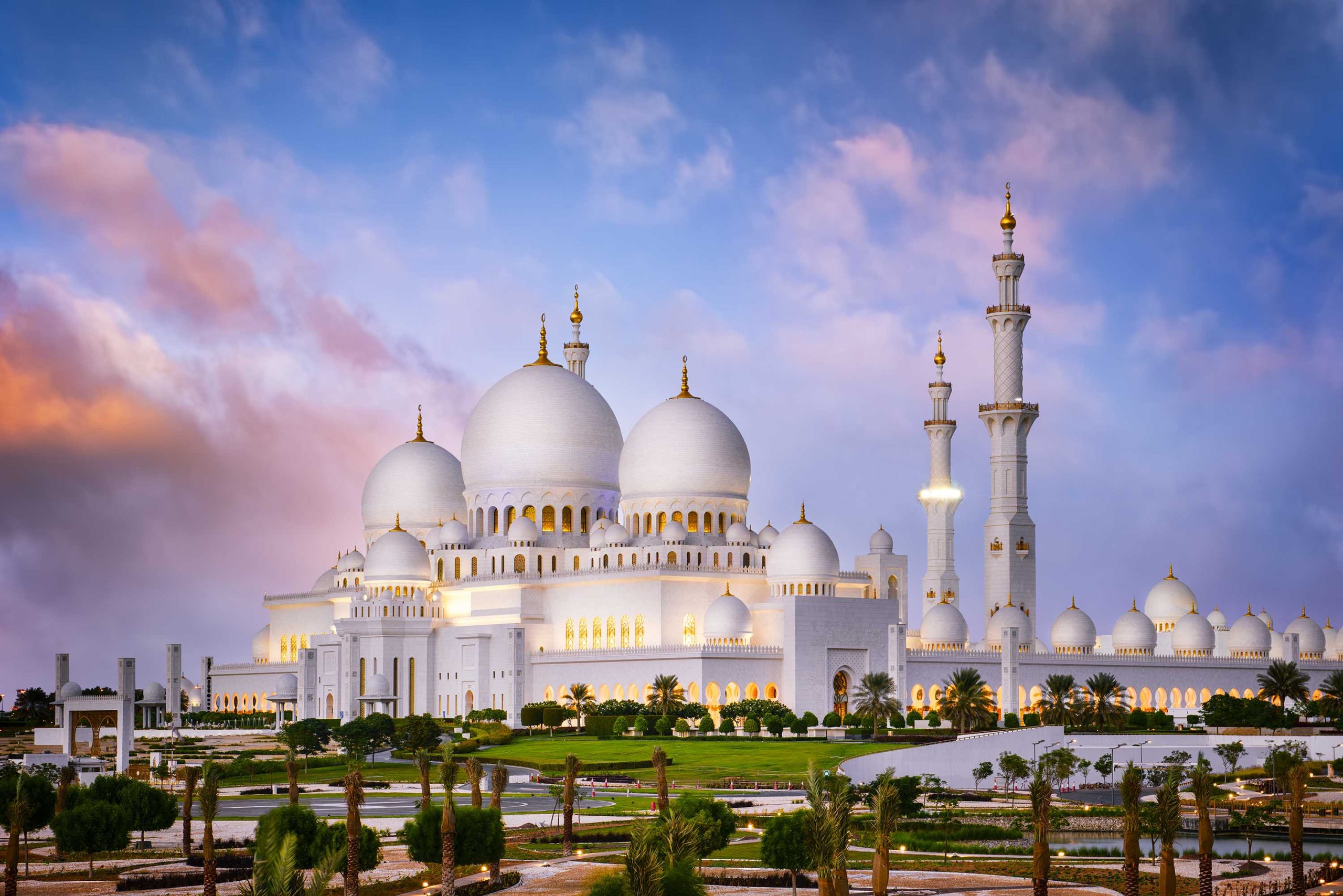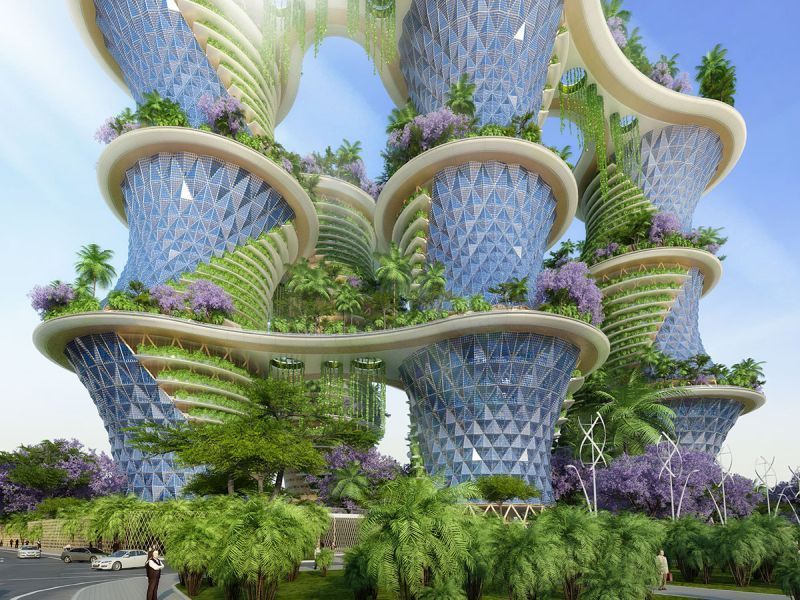The Sheikh Zayed Grand Mosque in Abu Dhabi, United Arab Emirates, stands as one of the largest and most opulent mosques in the world. Named after the founding father of the UAE, Sheikh Zayed bin Sultan Al Nahyan, the mosque is a symbol of peace, piety, and the cultural synthesis of Islamic and modern architectural designs. Completed in 2007, the mosque has since become a landmark, drawing millions of visitors annually, both for religious purposes and as a testament to human artistic achievement.
Architectural Grandeur Sheikh Zayed Grand Mosque
Contents
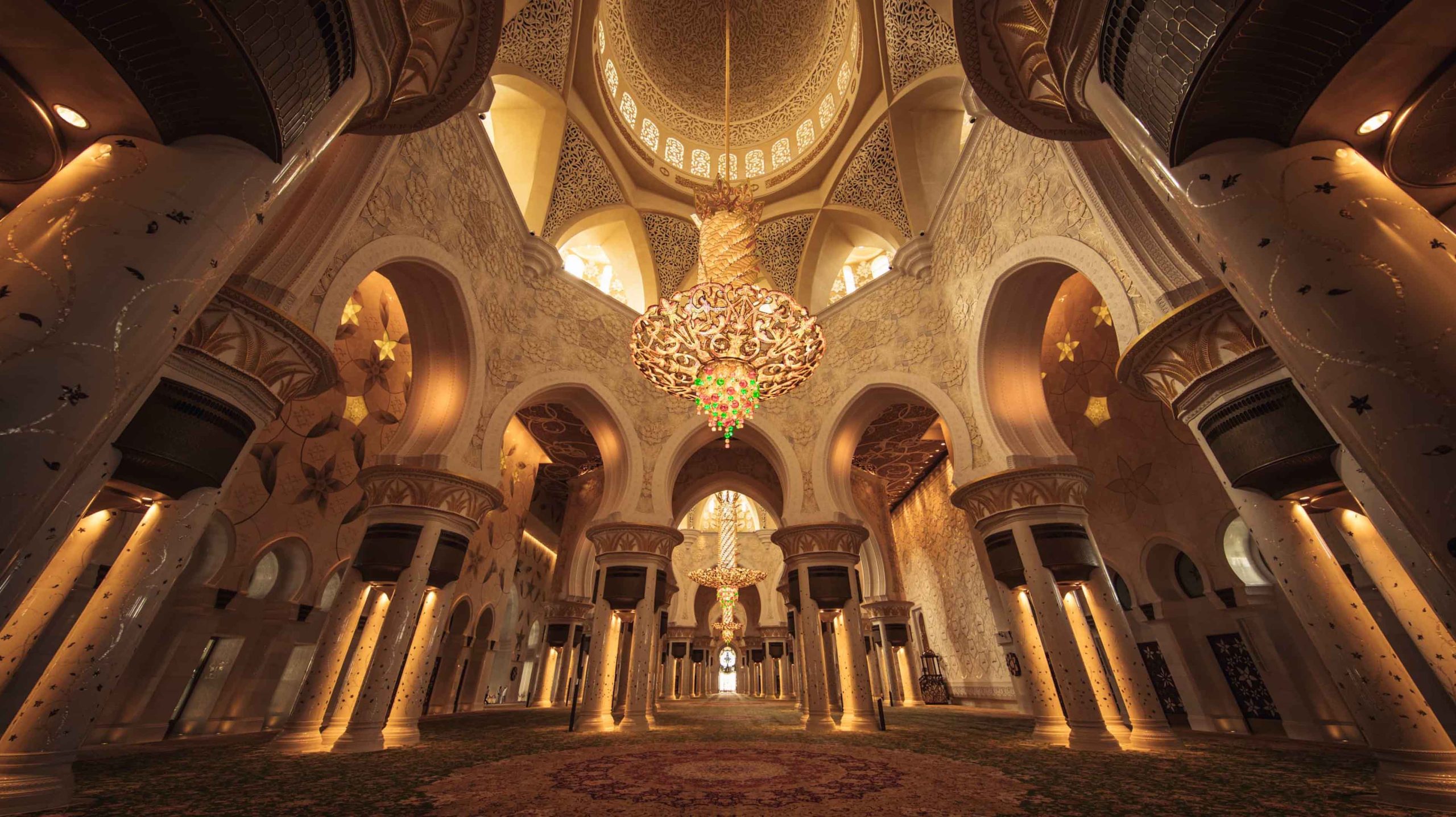
The Sheikh Zayed Grand Mosque is a masterpiece of modern Islamic architecture, blending traditional design elements with contemporary styles. Spanning an area of over 12 hectares, the mosque can accommodate more than 40,000 worshippers at a time. The mosque’s design was influenced by multiple Islamic architectural styles, including Ottoman, Mamluk, and Fatimid, creating a unique blend that represents the Islamic world’s cultural diversity.
The mosque’s exterior is dominated by its 82 domes of varying sizes, with the largest standing at a height of 85 meters. These domes are clad in pure white marble, a material that is symbolic of purity and peace in Islamic culture. The mosque’s four minarets, each reaching a height of 107 meters, are also a significant architectural feature, blending traditional Islamic elements with modern design techniques.
Interior Design and Artistry
Inside the mosque, the attention to detail is awe-inspiring. The main prayer hall is adorned with the world’s largest hand-knotted carpet, crafted by approximately 1,200 artisans over two years. This magnificent carpet spans an area of 5,700 square meters and weighs 35 tons, with intricate floral designs inspired by traditional Islamic art.
The mosque’s chandeliers are another remarkable feature. Made in Germany and incorporating millions of Swarovski crystals, the largest chandelier in the main prayer hall is 10 meters in diameter and 15 meters high, making it one of the largest chandeliers in the world. The use of gold-plated copper further enhances the luxurious feel of the interior.
The walls of the mosque are adorned with floral patterns made from semi-precious stones, including lapis lazuli, amethyst, and mother-of-pearl. These decorations reflect the mosque’s emphasis on beauty and artistry, with each pattern meticulously designed to complement the overall aesthetic of the mosque.
Religious and Cultural Significance
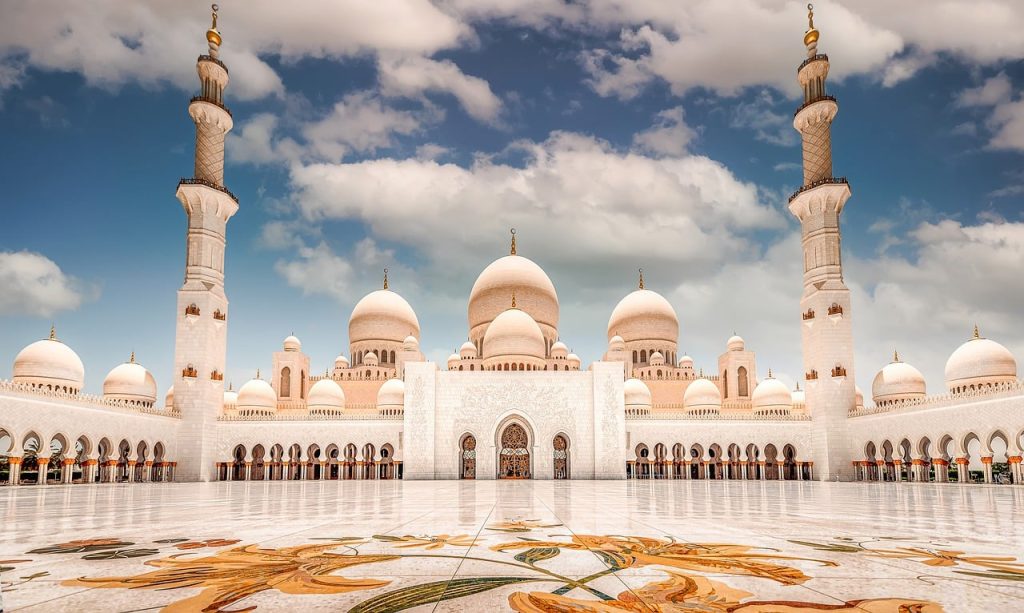
The Sheikh Zayed Grand Mosque is more than just an architectural marvel; it is a center of Islamic learning and culture. The mosque serves as a place of worship for daily prayers, Friday congregations, and the special prayers during Eid. It is also a place where people from different backgrounds and religions can come together to learn about Islam and its traditions.
One of the mosque’s primary purposes is to promote understanding and tolerance. The mosque’s visitor center offers guided tours that educate people about Islamic culture, the significance of the mosque, and its role in the community. The mosque also hosts events during the holy month of Ramadan, where people from all walks of life are invited to break their fast together, fostering a sense of unity and brotherhood.
Construction and Materials
The construction of the Sheikh Zayed Grand Mosque took over a decade, from 1996 to 2007, involving more than 3,000 workers and artisans from around the world. The mosque’s construction materials were sourced from various countries, reflecting the international nature of the project. The white marble, for instance, was imported from Macedonia, while other materials came from countries like Italy, Germany, and China.
The mosque’s construction was overseen by a team of international architects and engineers, ensuring that the building not only adhered to Islamic architectural principles but also met modern engineering standards. The result is a structure that is both aesthetically pleasing and structurally sound, capable of withstanding the harsh climate of the Arabian Peninsula.
Environmental Considerations
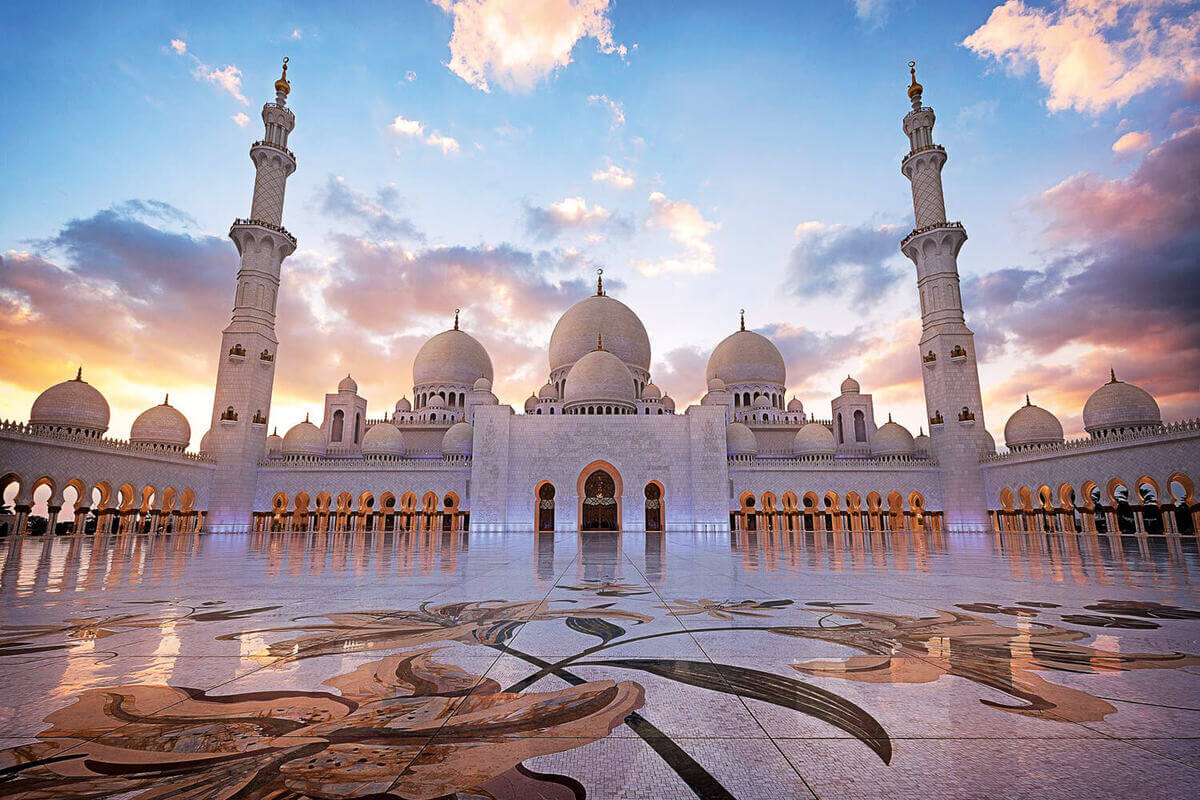
In addition to its architectural and cultural significance, the Sheikh Zayed Grand Mosque is also notable for its environmental sustainability. The mosque was designed with several features that reduce its environmental impact, including energy-efficient lighting and air conditioning systems. The mosque’s landscaping, which includes reflective pools and gardens, is designed to create a microclimate that reduces the need for artificial cooling.
The mosque’s water conservation measures are also noteworthy. The mosque has a sophisticated irrigation system that recycles water used in the ablution areas for use in the gardens. This not only reduces water consumption but also aligns with Islamic principles of sustainability and stewardship of the earth.
A Global Icon Sheikh Zayed Grand Mosque
Since its completion, the Sheikh Zayed Grand Mosque has become an iconic symbol of Abu Dhabi and the UAE. It is not only a place of worship but also a tourist attraction that draws visitors from around the world. The mosque’s stunning architecture and serene environment make it a popular destination for photographers, artists, and anyone seeking inspiration.
The mosque’s influence extends beyond its physical boundaries. It has been featured in numerous international publications and documentaries, showcasing the UAE’s commitment to cultural preservation and innovation. The mosque’s role in promoting interfaith dialogue and understanding has also earned it recognition as a beacon of peace in a region often associated with conflict.
Conclusion Sheikh Zayed Grand Mosque
The Sheikh Zayed Grand Mosque is a testament mariatogel to the vision of Sheikh Zayed bin Sultan Al Nahyan and his commitment to fostering unity, tolerance, and understanding through architecture and culture. The mosque’s blend of traditional and modern design elements, coupled with its cultural and religious significance, make it one of the most important landmarks in the Islamic world.
As the mosque continues to welcome visitors from around the globe, it stands as a symbol of the UAE’s rich cultural heritage and its aspirations for the future. Whether as a place of worship, a center of learning, or a tourist destination, the Sheikh Zayed Grand Mosque continues to inspire awe and admiration, serving as a reminder of the enduring power of architecture to unite people and cultures.

